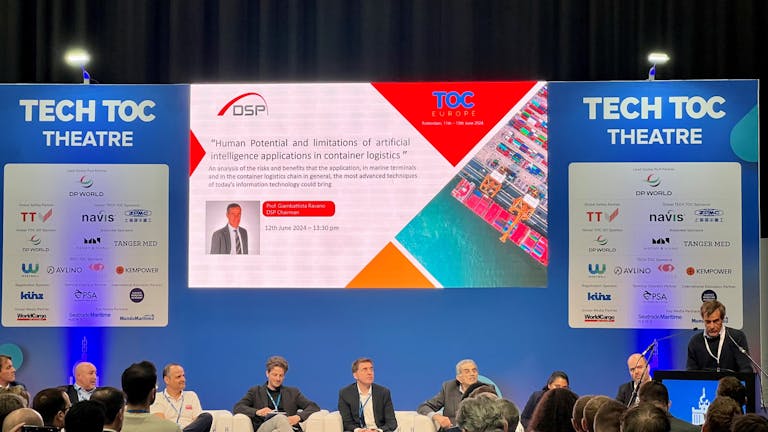Potential and limitations of artificial intelligence applications in container logistics.
Author:
Giambattista Ravano
An analysis of the risks and benefits that the application, in marine terminals and in the container logistics chain in general, the most advanced techniques of today's information technology could bring.

In general, computer applications have the characteristic of processing faster than a human brain; they also remember longer and much more. This allows us to fix the uncontroversial advantages that then determine the most useful features for putting into practice a digitization of a process be it operational or decision-making.
1. Faster
2. Longer
3. More
On the other hand, it is also necessary to highlight when these tools and applications are unable to do, or do less well than direct human intervention supported by technology but directly acting in the decision.
1. Drawing conclusions influenced by uncertain (not statistically inferable) factors.
2. Induce completely new thinking and conclusions based on new paradigms.
3. Consider emotional aspects.
The two sets of feature categories are certainly not exhaustive but sufficiently represent absolute potentials and limitations of the computer tool intended in a broad sense as a computer (hardware) and instructions (software) that enable the execution of a task.
It is necessary to start from such general considerations since in recent times there has been a great deal of confusion (artfully or unintentionally) in the distinction between application areas of new technologies such as those called Artificial Intelligence and areas instead limited to interventions or with more traditional tools (I would prefer to call them different), often confusing between potential and limits and often pushing the introduction of software tools actually so produced and sold essentially to sell rather than to actually solve a problem.
It thus becomes a good, if not necessary, exercise to analyze which operational cases (in this case in the operational management of a container terminal) have characteristics that, intersecting with said limitations, point them out as solvable by new technologies, as well as others that will be better addressed by more direct human intervention.
In this presentation, this is precisely the goal that is being pursued and will be explored.
If we consider the various operational scheduling actions (stowage planning, berth allocation, container stacking, scheduling of stacking machines, equipment scheduling, ....) we can see how each is variably influenced by repeatable and partially predictable factors and others more unpredictable and dependent on factors that can be governed by inserting conscious assessments and reflections of nonstatistical realities.
And so, in some cases, a learning technology is well justified and applied while in others, as we shall see, much less so.
In the Pic: DSP Chairman Giambattista Ravano speaking during TOC 2024 in Rotterdam
